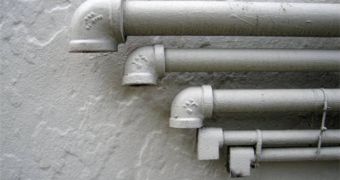Having to deal with clogged pipes is a very dirty and complicated business, because the clogs cannot be easily identified, and repairmen often have to take the whole installation apart, in order to look for the source of the problem. But the days of water all around the house and of high repair costs may soon go away like a bad memory, thanks to mathematicians at the ATolstoy Sciences, in the United States, and colleagues at the University of Bradford, in the United Kingdom. They have devised an elegant numerical model, which is able to identify precisely where a clog is in a pipe.
The innovation makes use of technologies pioneered for underwater acoustic systems, and is able to record the different sounds that the pipe makes when it's hollow on the inside, or when it's filled. Knowing where the problem is could significantly reduce repair times and costs, and would also make it a lot easier for those working with the actual pipes to take apart just a small portion of the installation, clean it, and then put it back together.
The experts who have created the new technique also believe it may be capable of detecting problems in very remote and unpleasant locations, such as sewers. In this application, the echolocation device could relay back to its controllers the possible locations of potential clogs, so that the humans could intervene topically, and no longer spend long hours moving all around the sewer lines, at times for miles on end.
The basic principle on which the new apparatus functions is fairly simple and inspired from the natural guidance mechanisms that bats and dolphins employ to find their destinations. The device sends ultra-high-pitched sounds in the general direction of the pipe, and then listens to the feedback. At first, the “profile” of the empty pipe is analyzed, and then stored by the machine as a reference point. Then, as clogs develop, the acoustic signature of each type of pipe changes, and the device is then able to infer where the clog is, as well as its possible size.
The best part about the new machine is that it's not distracted by turns and corners in the pipes. Thus far, it's only been tested in air-filled pipes, made from concrete, clay, or PVC, and totally or partially filled with sandbags and rocks. But the experts in charge of developing it say that the prototype should have no problems working in liquid-filled environments as well. However, further studies are required to test this hypothesis, ScienceDaily reports.

 14 DAY TRIAL //
14 DAY TRIAL //